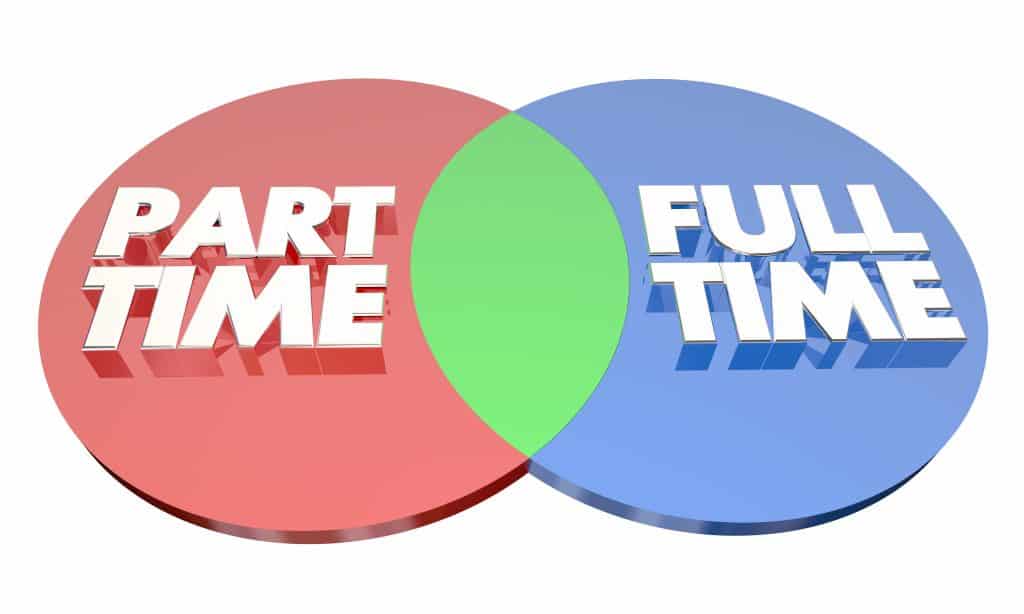College is a stepping stone in many career paths, and it is common knowledge that getting a degree or two can get very expensive. A couple of ways of paying for it is by getting a normal day-to-day job, or through a work-study at your college. But how do you choose which one to do?
Work-Study is usually through your school’s financial aid office and offers work to help pay for college expenses. After being awarded the Work-Study award, you will be able to earn up to the amount you were awarded. Getting a job that isn’t a part of a college program offers a bit more freedom because it will allow you more choices when considering where you work and how much you work.
Now the big question here is, how do you decide which one will be a better fit for you? Read on, and we’ll cover all the information you’ll need to decide.
Work-Study or Get a Job?

This can be a tough decision for some. Before you can decide what you want to do, you’ll need to know all of the crucial details about work-study and how it compares to a typical job. Let’s delve a little bit more into work-study and what exactly it is.
What is Work-Study?
According to Federal Student Aid, work-study is when students are offered jobs through their colleges’ financial aid office. The program is only available to those enrolled in classes, and not all schools participate.
Specifications of Work-Study
When a student signs up for the work-study program, they will have the opportunity to work full-time or part-time in a job field that they are currently studying for. This could give the student some experience for their resume and better their chances of getting the job of their choice after graduating.
Sadly, it isn’t always possible to work in a job field of your studies during work-study, as those jobs aren’t always available. That being said, you will have to be sure the work-study program is even possible at your school.
A downside to the work-study program is that you usually won’t be able to work overtime unless the Work-Study award that you received allows it. When you apply for Federal Work-Study, they take into consideration the Undergraduates program you are enrolled in, your schedule, and how you have progressed in the study. The hours you work depend on how much you were awarded through the Federal Aid Work-Study award.
Compensation
The pay is a little different too. If you are an undergraduate student, you usually will only have the option of hourly pay. Whereas, graduate students can receive both hourly and salary. Your paychecks should come directly to you at least once a month, if not more.
For most schools, no matter whether you’re an undergraduate or a graduate student, you will have the option for your paycheck to either be sent to your bank account via direct deposit or sent straight to your student account to pay for tuition and fees, and room and board if you live on campus.
Pay usually depends on what kind of job you have, just as it would for a normal job. You will at least receive minimum wage, but it could be more if you work in a trade that requires certain skills. Your pay will also depend on how much funding your school has for the work-study and how much financial aid you need, as I mentioned before.
Where Will You Be Working?
The work-study program offers jobs both on and off campus and is usually through a nonprofit business or public organization that partners with your school. As mentioned before, the jobs are applicable to your degree. If your school is a for-profit institution, then the work-study program might have restrictions for the jobs that you will be allowed to work.
Work-study jobs are limited and go fast, so it’s best to apply as soon as possible. Even if you’re awarded the Federal Work-Study award, it doesn’t necessarily mean you will get a job. You will still be required to find an available work-study job if your school doesn’t match you with one. This means job hunting, applying, and interviewing.
Getting a Normal Job
There is always the option to go out and get a job on your own without the help of your school’s financial aid office. This will take initiative on your part and, depending on your resume, it might take you longer because the businesses you are applying at aren’t required to help you out.
Specifications of a Non-Work-Study Job

Like work-study, you can choose a job that’s either part-time or full-time. This is completely your decision, and it usually depends on how much time you have outside of school and what your personal capabilities are.
A plus side to finding a job on your own is that you won’t be restricted to jobs partaking in the work-study program. You will have the opportunity to apply at any job of your choosing, anywhere you’d like, as long as you can make it to your classes on time.
Another upside to finding your own work is that you can work as many hours as you want, or as many as your job allows. You aren’t restricted to a max earning like you are with the Federal Work-Study Program.
Compensation
The pay for a non-work-study job is generally by the hour. Especially if they know you are a college student. You could look into a paid internship, but that is a discussion for another article.
When you find a job that is willing to take you on, they will let you know their hourly pay from the beginning. It could come either weekly or biweekly and can come in many forms of payment. These forms can include but aren’t limited to, a check, direct deposit, or a payment card.
It will be your responsibility to take the money that you earn and put it towards your tuition and fees. A job that isn’t involved in the work-study programs probably won’t have an option to send your earnings directly to your school.
Like the work-study program, the pay usually depends on what skills you will be using and what level of work you will be doing (i.e., entry-level, expert level). This will be for any job that you apply for before, during, or after college.
Where Will You Be Working?
You will have the opportunity to work on or off campus, but most job opportunities will likely be off campus. Some issues you might run into here is how much available work is in your area and whether or not they will be willing to take a college student.
You can work in any job field you would like. But unlike the work-study program, you won’t have anyone vouching for you in order to better your chances of getting a job in your degree field. You will be on your own in getting a job that will give you experience in your future career.
There are some businesses that have programs that will pay for, or reimburse, tuition for their eligible full-time employees. Some requirements to use these programs are that the courses you take have to be job-related, and there is a maximum amount they will allow. Some examples of these businesses are Bank of America, Starbucks, and UPS.
Does Work-Study Affect Financial Aid?
Fortunately, work-study earnings do not affect your eligibility for financial aid, and it doesn’t affect the amount you are eligible for. On the other hand, if you were to get a job outside of work-study, it could potentially reduce your eligibility by 50%. It would be a good idea to speak to your financial aid advisor before making any decisions.
What Types of Student Loans Are There?
Taking out a loan is a big decision. If your financial aid and work-study don’t pay for all of your tuition, fees, room, boarding, and supplies, then you may need to consider a loan. You can get a student loan from a bank of your choosing, a loan organization, private sources, or the federal government, among others. It is important to know that the institution you are receiving this loan from is upfront and trustworthy.

The U.S. Department of Education has a student loan program that offers four different types of loans.
- Direct Subsidized Loans: These loans are for undergraduate students that need help paying for tuition at college and career schools. Your school will decide how much you can receive through this loan, and the U.S. Department of Education will pay the interest on this loan while you are attending school and for the first six months after graduation.
- Direct Unsubsidized Loans: These loans are for undergraduate, graduate, and professional students. As with the Subsidized Loan, the school decides the amount in which the student needs for tuition and other costs. The student will be the one paying for the interest of this loan from the time that they begin receiving it until it’s paid off. If you can’t pay it while you are attending college or during the grace period, your interest will grow and be added to the overall loan amount.
*There is a loan fee for the two loans mentioned above. The amount depends on when the loan was taken out.
- Direct PLUS Loans: These loans are for graduate and professional students, or parents and guardians of the undergraduate students attending college. This loan might be more difficult to receive because they run a credit check. Those with bad credit will have other requirements they have to meet before they can receive this loan. The deciding factor for a Direct PLUS Loan has nothing to do with income or need for financial help.
- Direct Consolidation Loans: This is less of a loan and more of a one-stop-shop for all of your loans. It’s a way to put all of your loans together and pay them all at the same time.
What Happens If You Can’t Pay on Your Loan?
When it’s time to start making payments on your loan(s), sometimes you might not just have it. There are ways to temporarily put off payments.
What Is a Deferment?
A deferment is a way to suspend your federal student loan payments for a few months. Getting a deferment on your federal student loans is a good option because your interest won’t accumulate during this period. You will have complete relief from your loan for the period allotted. This option is only for those that haven’t defaulted on their student loans already, though. You will be ineligible for deferment once this happens. Some options for deferment include:
- Military deferment
- Economic hardship deferment
- Graduate fellowship deferment
- Cancer treatment deferment
These are only a few of the options given for this type of temporary loan relief.
What Is a Forbearance?
Much like a deferment, a forbearance is for those that can’t afford to make their loan payments. It’s a temporary hold on your student loans, but your interest will continue to accumulate. Unlike the deferment, you can be delinquent or default on your loans when you apply, and you won’t be denied because of it.
This is for those that have a very short lapse in income. The interest on student loans can build incredibly fast, and that amount will just be added to your overall loan amount. So, it’s best to keep this type of loan relief short.
Some qualifying factors for this type of loan relief are:
- Poor health
- Mandatory Forbearance (for low-income borrowers)
- Administrative Forbearance (during the time for a change in loan status)
Other Options for Student Loans
If you can’t afford the added interest or you get denied for the temporary loan relief programs, there are other options to explore.
Lower Your Payments
Many people don’t realize that they can lower their payments with the income-driven repayment plan. This plan bases your monthly payment on your income and family size. Your monthly payment could drop dramatically.
Loan Forgiveness, Cancellation, or Discharge
In certain circumstances, you can have your student loan completely wiped clean. Loan forgiveness and loan cancellation generally take place for those that are no longer required to pay on their loan because of their job. If you are unfortunate enough to become totally and permanently disabled, then you could be discharged from your loan.
- The Public Service Loan Forgiveness program, or (PSLF) is designated for those working for the government or a not-for-profit organization. You have to have made 120 monthly payments during a repayment plan while you worked full-time in order to qualify. This program is only available for Direct Loans.
- The Teacher Loan Forgiveness program is for teachers that have taught for five full years in specific types of schools. These schools include low-income elementary, secondary schools, or educational service agencies. This program is available for Direct Loans and Federal Family Education Loan (FFEL) Program Loans.
- A Closed School Discharge simply means that the school you attended closed during enrollment or not long after you left. Because there would be no school to collect the loan, you would be discharged from the loan agreement and, therefore, wouldn’t have to pay it. This program is available for Direct Loans, FFEL Program Loans, and Perkins Loans.
- A Total and Permanent Disability Discharge is for those that are permanent and totally disable. This program is available for Direct Loans, FFEL Program Loans, and Perkins Loans.
These are four of the many possibilities. Each program has specific requirements you need to meet in order to be eligible for them, but it’s definitely worth the look. If you are eligible for any of them, it could save you thousands of dollars. If you don’t qualify for any, and your loan isn’t paid off after 20 years, you could apply for loan forgiveness on the remaining balance. In this instance, you will be taxed for the amount you were forgiven; so, keep that in mind.
How to Decide What Type of Job to Get
Now that we have covered what a work-study is and how it compares to a normal day-to-day job, hopefully you have the information you need to decide which type of job is the best fit for you.
You will want to factor in what loans you may need to take out in case your work and federal aid don’t cover all the school’s expenses, and what to do after those loans have accumulated.
This really all depends on what your preferences are when it comes to pay, freedom, and taxes. For a work-study job, you will have options of the local businesses that are involved in the college’s work-study program, you will make at least minimum wage, and your income will not affect your financial aid.
For a normal day-to-day job, you have the freedom to choose where you work and how often you work, there is no cap on the amount of money you are allowed to earn, and your income can affect how much you are awarded for financial aid.
